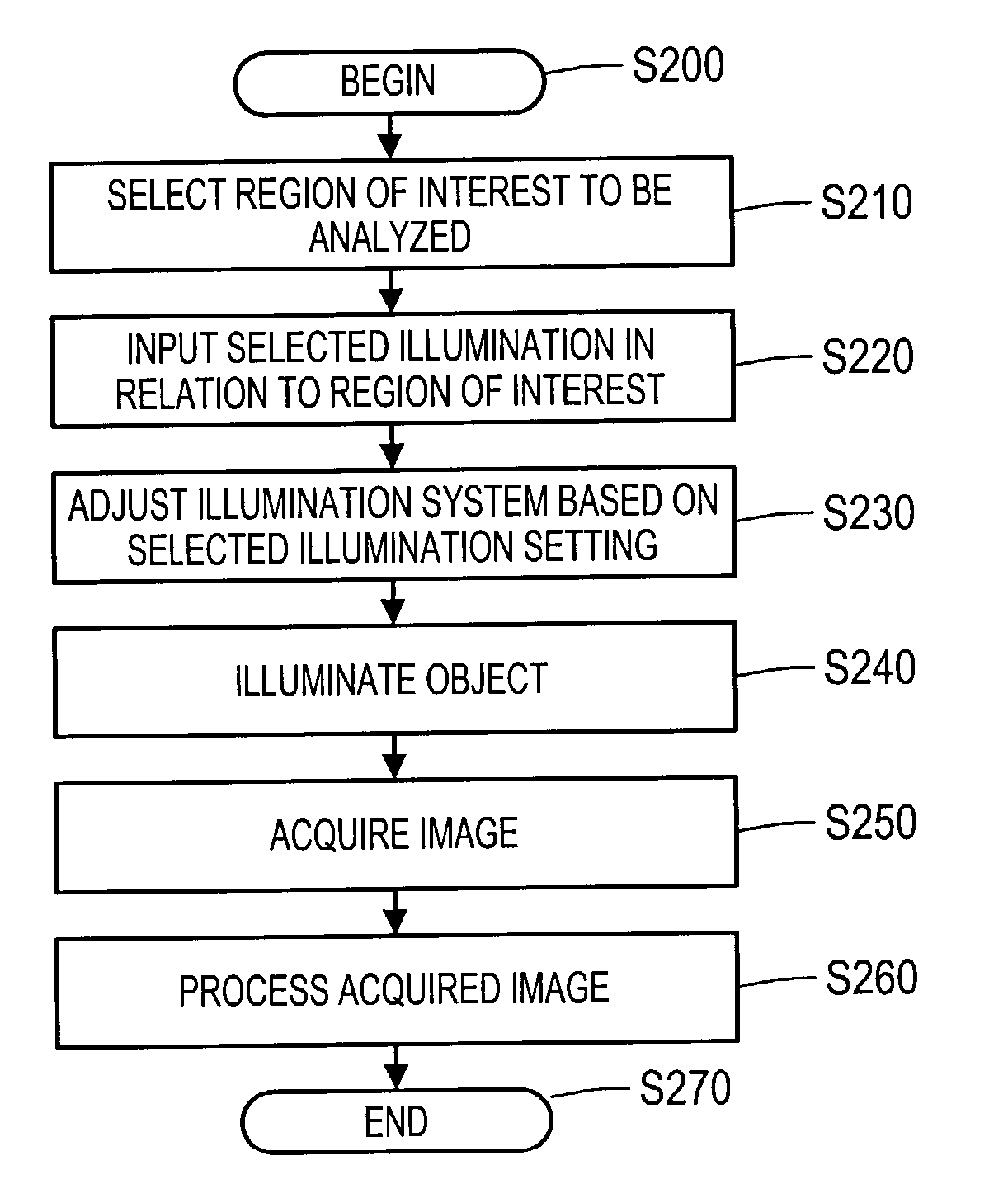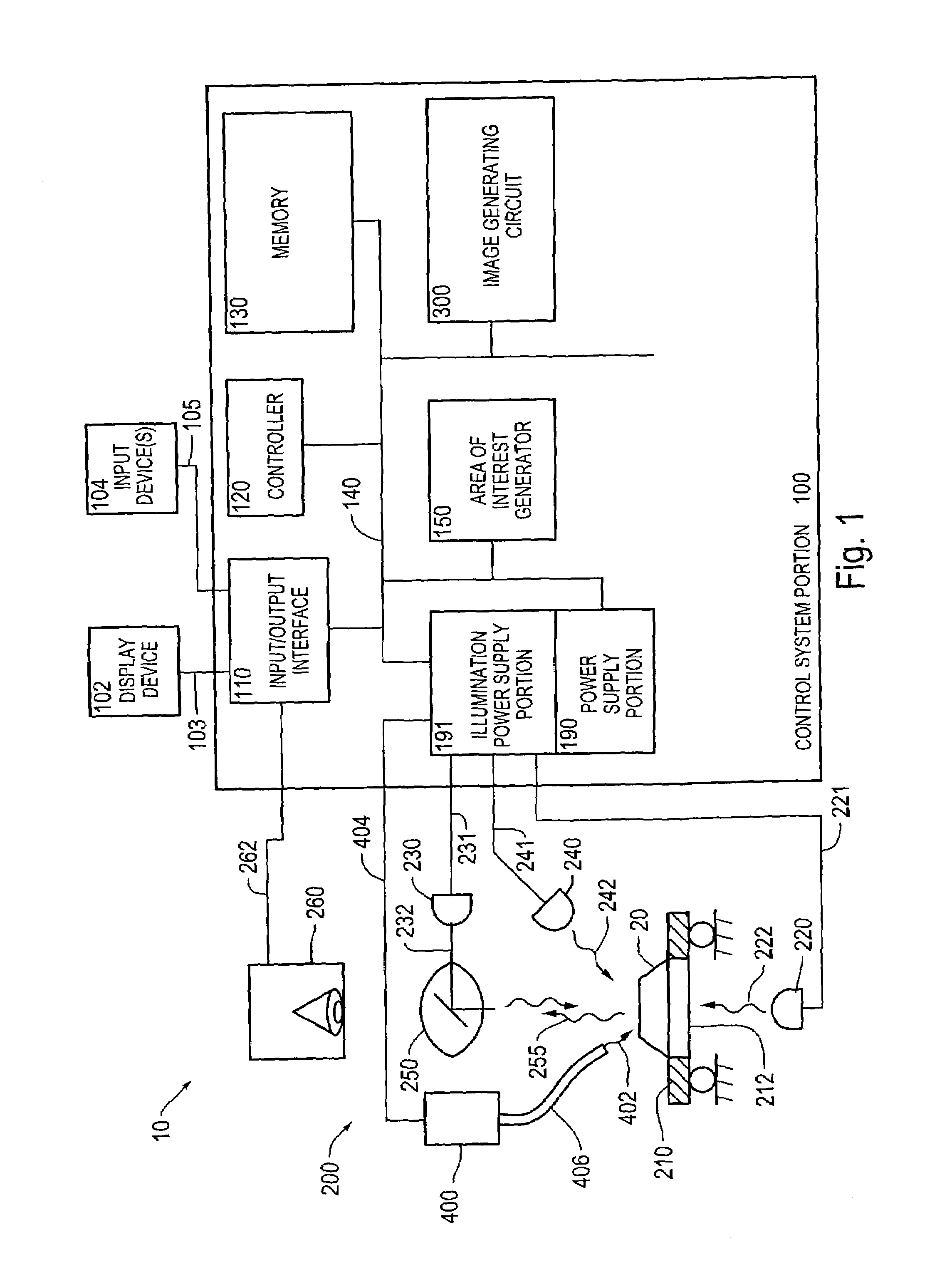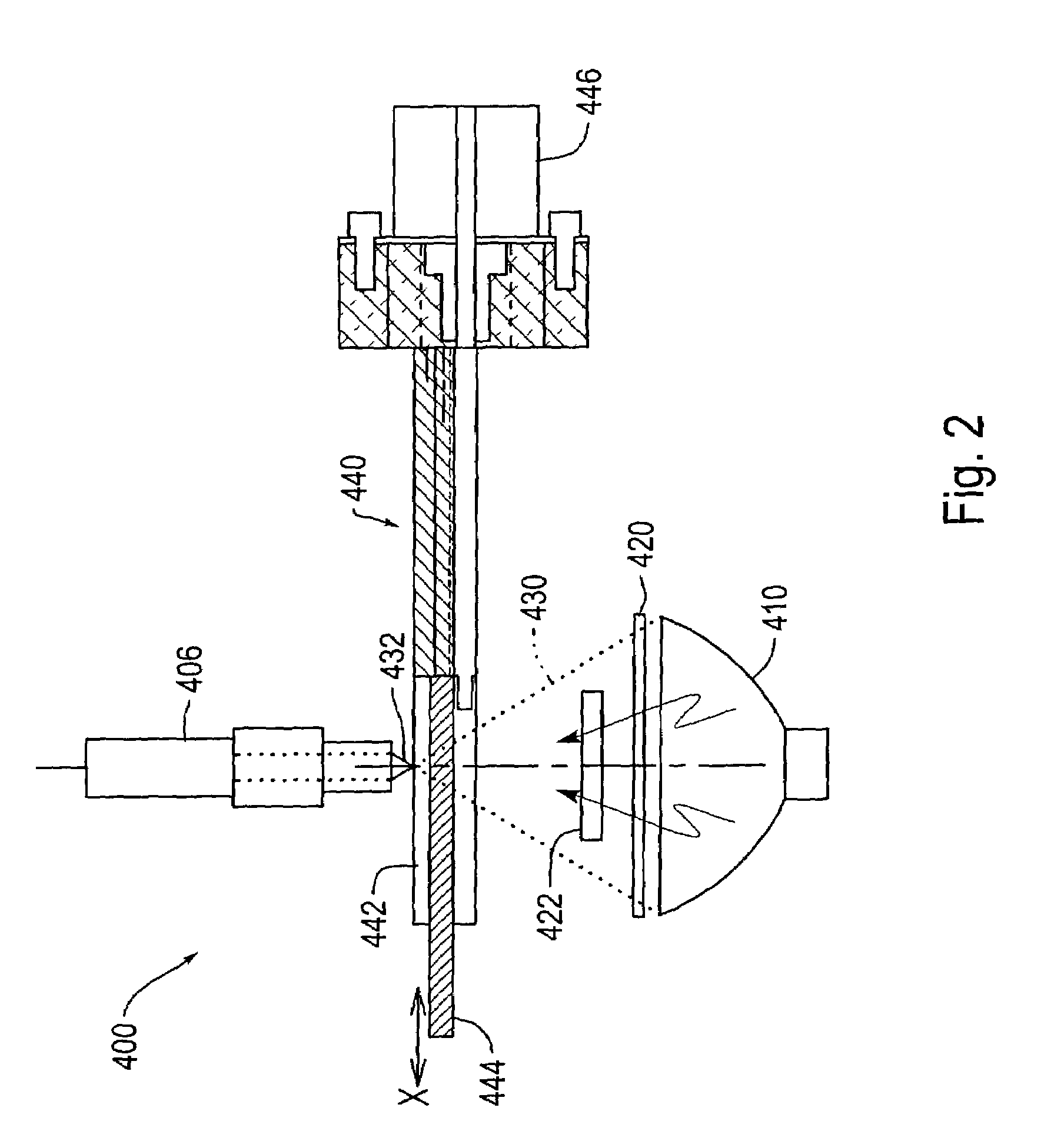Systems and methods for continuously varying wavelength illumination
a technology of continuous varying wavelengths and wavelengths, applied in the field of precision wavelength illumination selection, can solve the problems of limiting the throughput of such systems, and inability to intuitively understand the average machine vision user's experience, so as to reduce the economic value of the system, limit the throughput, and consume time.
- Summary
- Abstract
- Description
- Claims
- Application Information
AI Technical Summary
Benefits of technology
Problems solved by technology
Method used
Image
Examples
Embodiment Construction
[0030]For simplicity and clarification, the operating principles and design factors of this invention are explained with reference to one exemplary embodiment of a vision system according to this invention, as shown in FIG. 1. The basic explanation of the operation of the vision system shown in FIG. 1 is applicable for the understanding and design of any vision system that incorporates the illumination selection systems and methods according to this invention.
[0031]FIG. 1 shows one exemplary embodiment of a vision system 10 incorporating one exemplary embodiment of the tuned illumination systems and methods according to this invention. As shown in FIG. 1, the vision system 10 includes a control system portion 100 and a vision system components portion 200. The vision system components portion 200 includes a stage 210 having a central transparent portion 212. A workpiece 20 to be imaged using the vision system 10 is placed on the stage 210. One or more of the light sources 220, 230 a...
PUM
| Property | Measurement | Unit |
|---|---|---|
| current illumination wavelength | aaaaa | aaaaa |
| illumination wavelength | aaaaa | aaaaa |
| current illumination wavelength control parameter | aaaaa | aaaaa |
Abstract
Description
Claims
Application Information
 Login to View More
Login to View More - R&D
- Intellectual Property
- Life Sciences
- Materials
- Tech Scout
- Unparalleled Data Quality
- Higher Quality Content
- 60% Fewer Hallucinations
Browse by: Latest US Patents, China's latest patents, Technical Efficacy Thesaurus, Application Domain, Technology Topic, Popular Technical Reports.
© 2025 PatSnap. All rights reserved.Legal|Privacy policy|Modern Slavery Act Transparency Statement|Sitemap|About US| Contact US: help@patsnap.com



